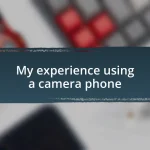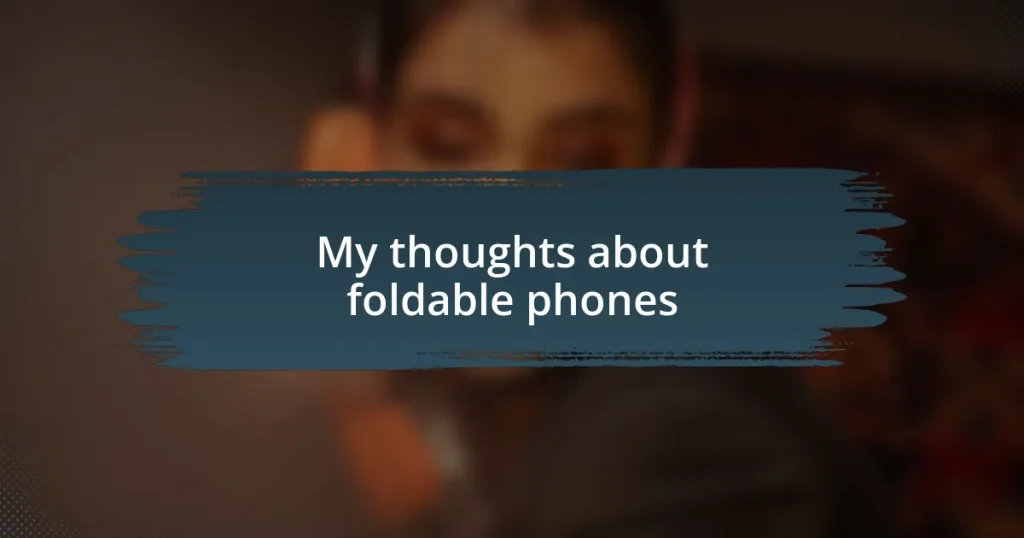Key takeaways:
- Foldable phones combine portability and large displays, enhancing multitasking and user experience.
- Key considerations include durability, cost, app compatibility, weight, and battery life.
- Notable models in 2023 include Samsung Galaxy Z Fold4, Oppo Find N, and Motorola Razr 2022.
- Future advancements may focus on durability, flexible designs, integration with AR/VR, and eco-friendly materials.
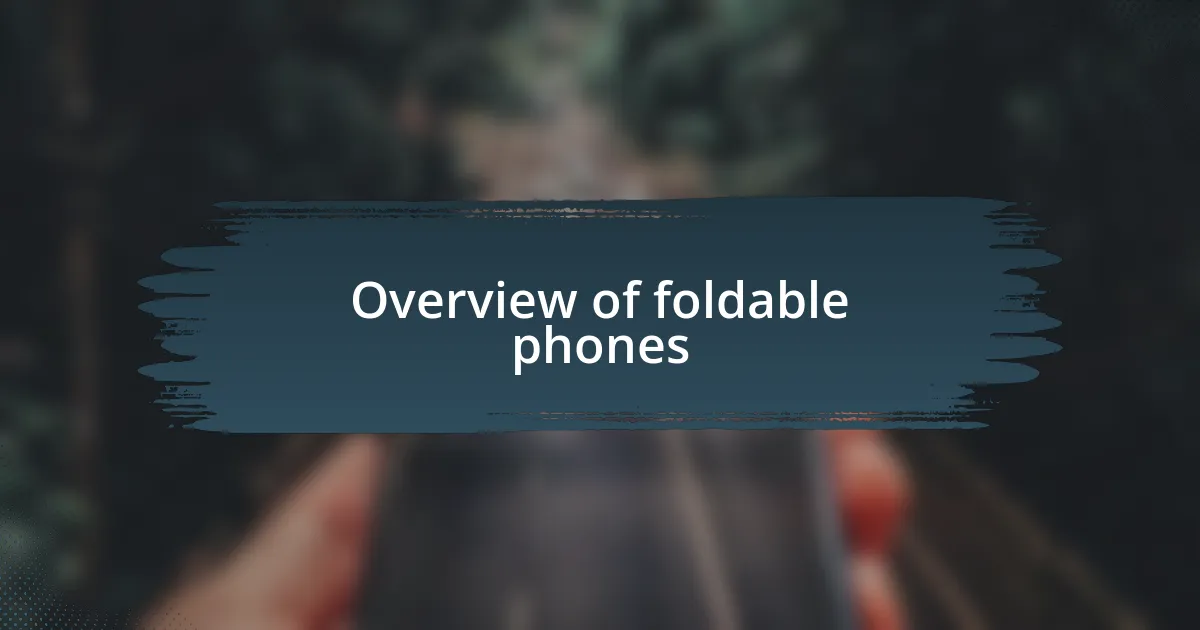
Overview of foldable phones
Foldable phones represent a fascinating evolution in mobile technology, combining the portability of smartphones with the functionality of tablets. I still remember the first time I held a foldable phone; it felt like something out of a sci-fi movie. The thrill of unfolding a device that expands my screen space instantly made me feel like I was living in the future.
These devices utilize innovative hinge mechanisms that allow screens to bend without damaging the display, creating a seamless user experience. It’s incredible to think how this technology not only enhances multitasking—like video chatting while browsing the web—but also sparks curiosity about what’s next. Have you ever wondered how far we can go in design and usability? I find myself imagining even more drastic reimaginings of how we work and play with our tech.
Yet, foldable phones come with their challenges, including durability and price considerations. Personally, I’ve seen friends hesitant to invest in such devices due to worries about their lifespan and the cost. It leads me to question: can foldable phones truly be seen as everyday devices, or are they just novelties for tech enthusiasts?
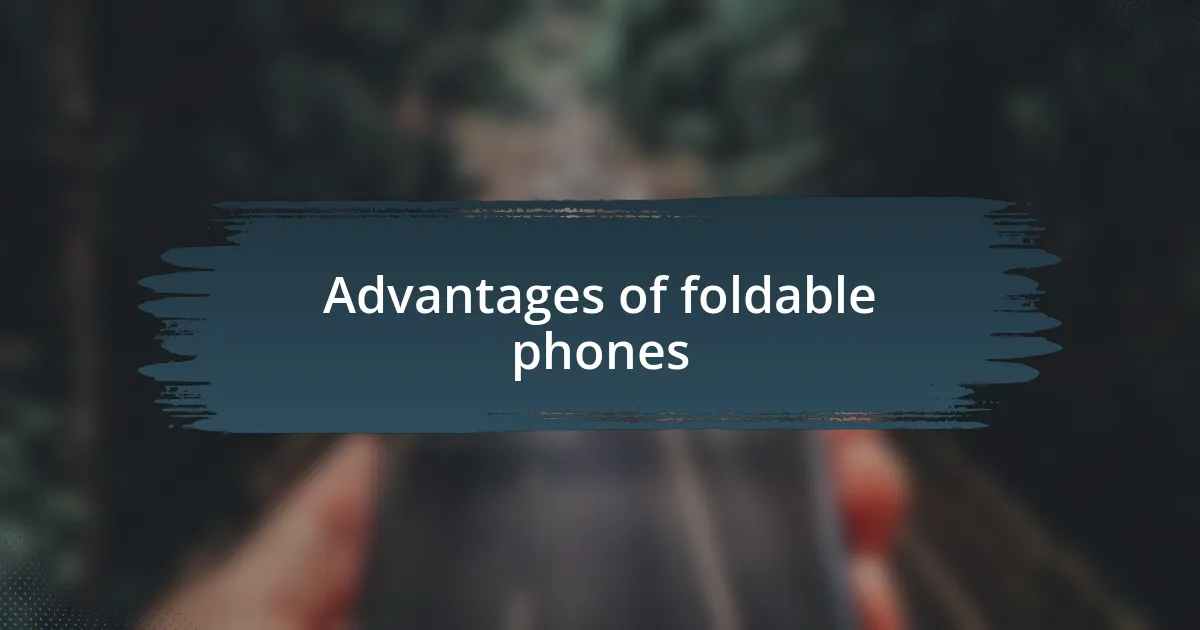
Advantages of foldable phones
Foldable phones offer a remarkable advantage in terms of versatility. For instance, when multitasking, the ability to run multiple apps side by side on a larger screen is a game changer. I remember trying to catch up on emails while streaming a show during my commute. The experience was so immersive, I felt like I had transformed my train ride into a working session that didn’t feel cramped at all.
Another perk is their compact design. It’s hard to deny how convenient it is to have a device that can fit easily in my pocket yet provide the expansive screen of a tablet when opened. I can vividly recall a beach trip where I used my foldable phone to browse photos without worrying about carrying extra gadgets or dealing with a bulky tablet. That ease of use makes me appreciate the evolution of technology in creating devices that cater to our mobile lifestyles.
Lastly, foldable phones appeal to those who value creativity. The unique design immediately becomes a conversation starter. I can’t tell you how often I’ve shared my thoughts on my foldable phone with friends—it’s sparked discussions and even prompted some to rethink their own device choices. The excitement around showing off its functionality is palpable, which provides a sense of community among users who share this innovative experience.
| Advantage | Description |
|---|---|
| Versatility | Run multiple apps side by side for efficient multitasking. |
| Compact Design | Easily fits in pockets while offering a large display when open. |
| Creative Appeal | Unique design fosters conversations and community among users. |
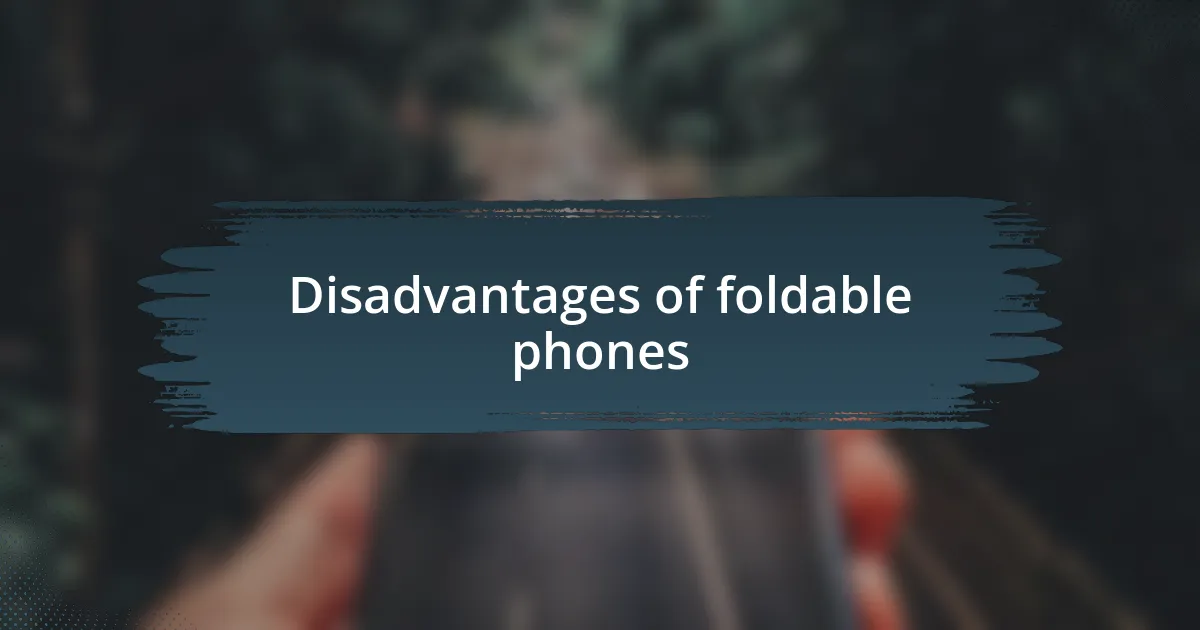
Disadvantages of foldable phones
While foldable phones present exciting possibilities, they also come with notable disadvantages. One of my biggest concerns is their durability. During a friend’s demonstration of her brand-new foldable phone, the screen developed a noticeable crease after just a few weeks of use. It made me question how well these devices can withstand the wear and tear of daily life, especially considering my own clumsiness.
Here are some key drawbacks:
- Fragility: Foldable phones typically have a more delicate build than traditional smartphones, increasing the risk of damage.
- Cost: They tend to be significantly more expensive than non-foldable models, which can deter potential buyers.
- Limited App Compatibility: Some apps may not yet be optimized for foldable screens, leading to a subpar user experience.
- Heavier Weight: The additional components often make them bulkier, which can be inconvenient for users accustomed to lightweight phones.
- Battery Life: The larger screens can drain battery life more quickly, which is frustrating for those of us who rely on our phones throughout the day.
These factors contribute to an overall hesitation I feel when considering whether to invest in a foldable device. Although the allure is strong, practicality often trumps novelty for many users, myself included.

Key features to consider
When thinking about purchasing a foldable phone, one of the most important features to examine is the quality of the hinge mechanism. I remember a colleague who experienced a frustrating scenario when the hinge on her device became loose after just a few months. This raises the question: how often will you really be folding your phone? A sturdy hinge is crucial for longevity, as it dictates not only ease of use but also the overall durability of the device.
Another factor that can’t be overlooked is the display quality. I’ve seen some foldable phones with stunning visuals, while others have screens that significantly lag behind traditional options. If you’re like me and enjoy streaming shows or gaming on your phone, investing in a device with a vibrant, high-resolution display can drastically enhance your experience. It’s not just about having a phone; it’s about how well it performs during those moments when you want to unwind.
Lastly, consider the software experience tailored for a foldable phone. I had a chance to play around with a model that optimized apps beautifully, allowing for split-screen functionality. It felt so intuitive that I wondered if I could go back to a regular phone after that. How seamlessly the software integrates with the foldable design can make your daily tasks smoother and more enjoyable. Don’t underestimate the power of a well-designed interface; it can turn a cool gadget into an indispensable part of your life.
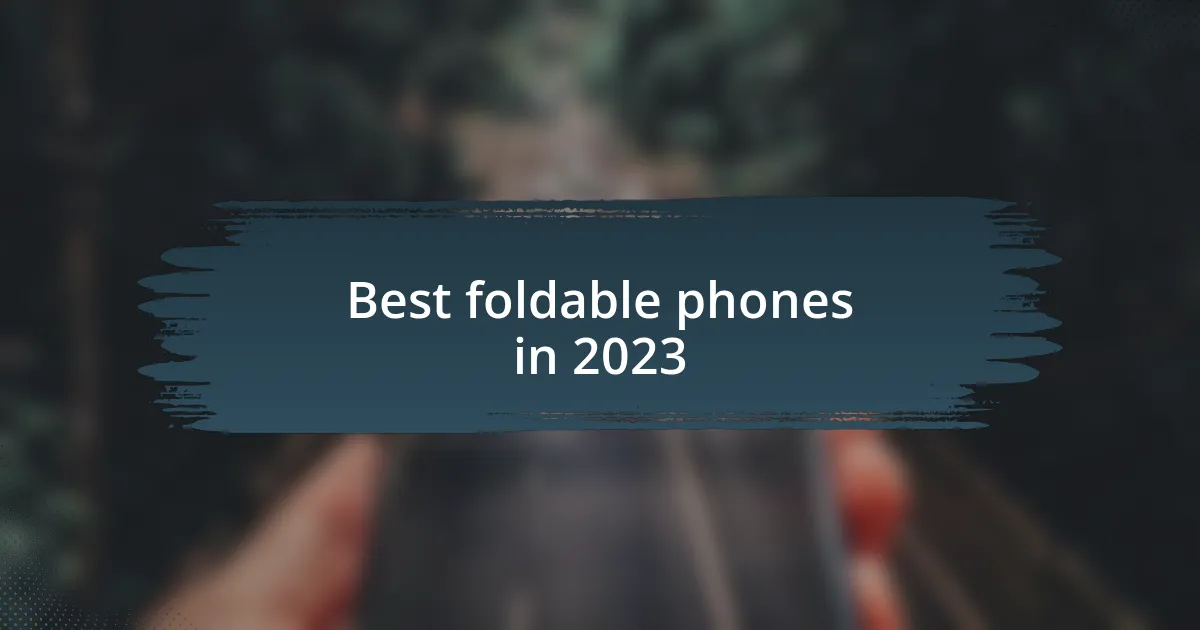
Best foldable phones in 2023
One of the standout contenders for the best foldable phone in 2023 is the Samsung Galaxy Z Fold4. I remember the first time I unfolded one, and it felt like opening a book that revealed endless possibilities. The large display is perfect for multitasking—think of watching a video on one half while scrolling through social media on the other. It’s an experience that just makes you wonder how you ever used a regular phone for productivity.
Another impressive model is the Oppo Find N. What struck me most was its compact design, which makes it incredibly pocket-friendly. I’ll admit, when I first picked it up, I wasn’t sure it would hold up to my usage, but its build quality really impressed me. The way it folds without compromising on screen space yet remains portable is a game-changer. Have you ever found yourself wishing for something that balances utility and style? This phone might just tick both boxes.
Lastly, the Motorola Razr 2022 combines nostalgia with modern technology. I can’t help but reminisce about the original Razr flip phone I had back in the day. This updated version brings that classic feel into today’s world, but with an advanced folding display that feels sleek and premium. Every time I snap it shut, there’s a satisfying click that brings a smile to my face. Isn’t it fascinating how a simple fold can evoke so many memories while delivering the latest tech?
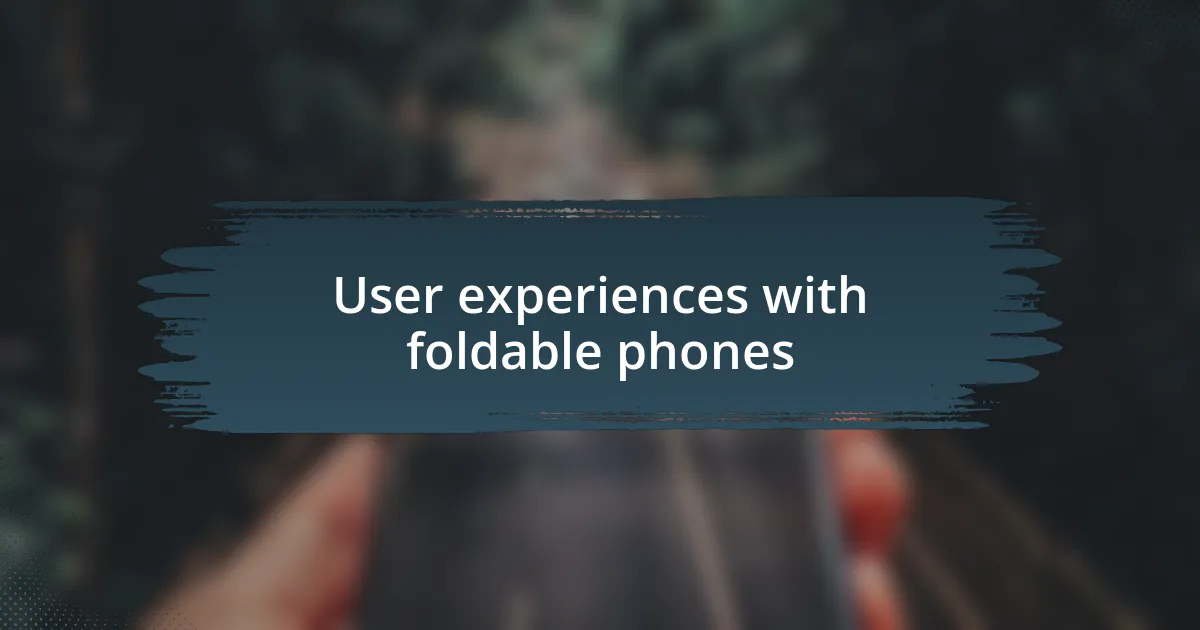
User experiences with foldable phones
I’ve had the opportunity to interact with various users of foldable phones, and a consistent theme is their awe at the large screen real estate combined with portability. One user shared that they appreciate the immersive experience while streaming shows, likening it to having a mini tablet in their pocket. It’s those moments of surprise and delight that really stick with you, isn’t it?
Another interesting observation I’ve noted is the learning curve involved with foldable devices. A friend expressed initial frustration with adapting to the new folding mechanism, worried it might break with daily use. However, as they grew accustomed to it, they felt more empowered by the phone’s unique features. This transformation from hesitation to confidence can be quite relatable, don’t you think?
Then there are the conversations around durability. Users often voice concerns about potential screen damage, but many admit that they were pleasantly surprised by the resilience of their devices. One colleague even told me how dropping his Oppo Find N resulted only in minor cosmetic scratches, a testament to its solid design. It prompts me to ask: what sacrifices would we be willing to make for innovation?

Future trends in foldable technology
Foldable technology is evolving rapidly, and I believe we’re on the cusp of some exciting advancements. Imagine a future where foldable screens not only become more durable but also feature enhanced flexibility, allowing for even more creative designs. I can picture a time when these devices transform from pocket-sized phones to larger displays at the swipe of a hand, making multitasking more intuitive than ever.
As I look ahead, I get the sense that integration with augmented reality (AR) and virtual reality (VR) will redefine how we interact with foldable phones. I recently tried an AR app on a foldable device, and the experience was mesmerizing. It made me wonder if we might soon see phones that not only fold but also project 3D images, creating an interactive environment in our day-to-day lives.
Moreover, the shift toward eco-friendly materials in foldable phones intrigues me. Companies are becoming more conscious of their environmental impact, and I envision future models that use sustainable resources without compromising on quality or design. Isn’t it refreshing to think that the tech we enjoy could also be kinder to our planet?








